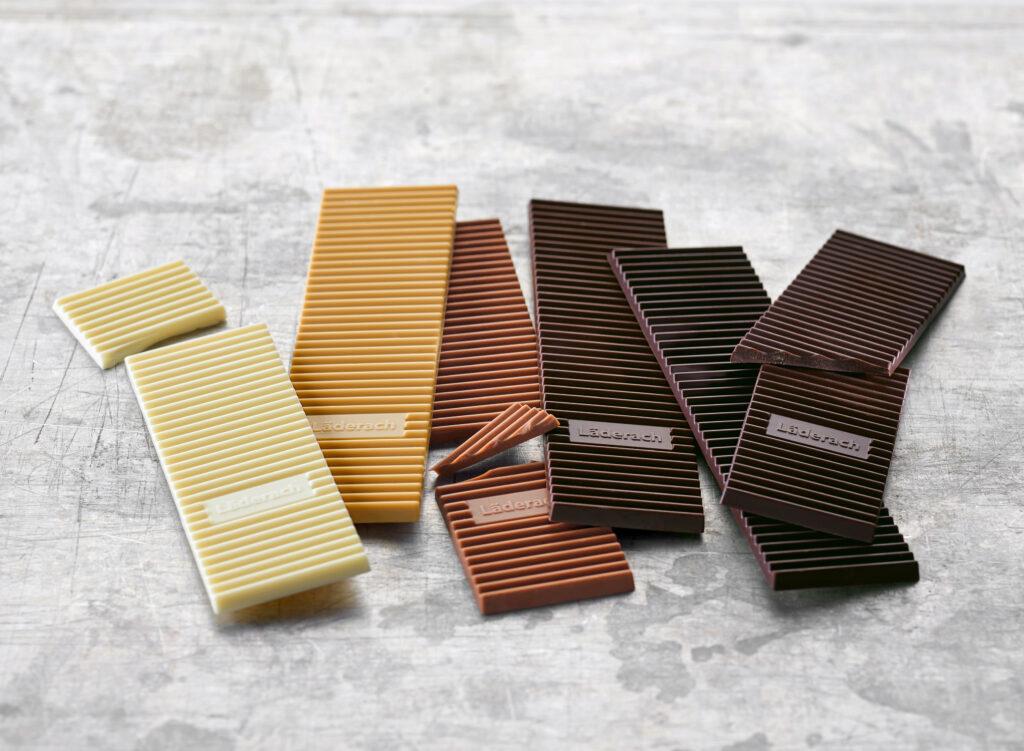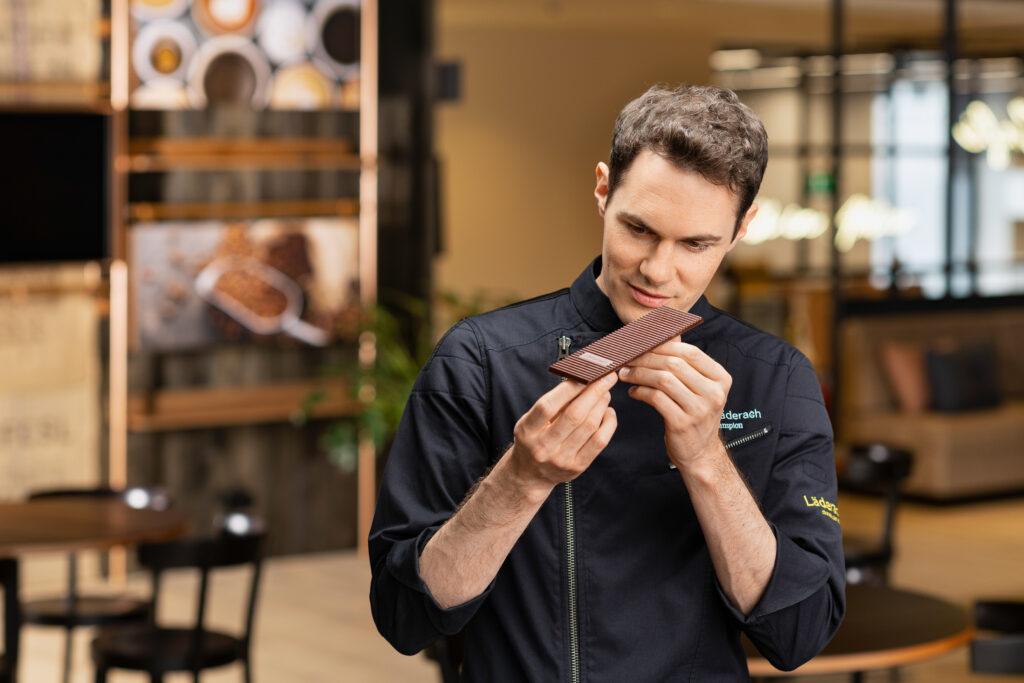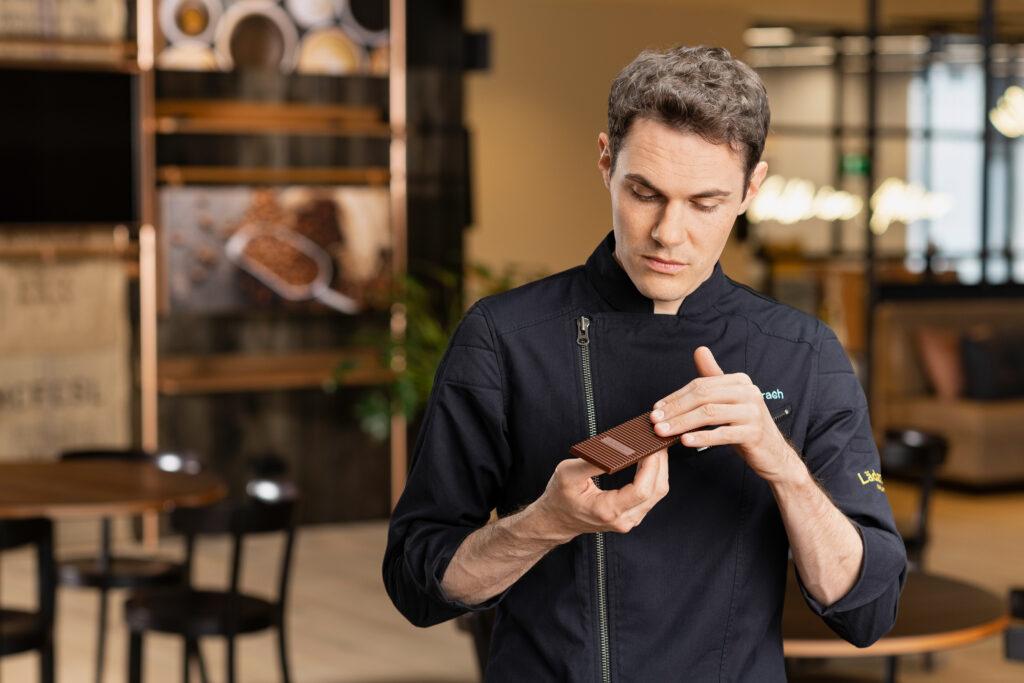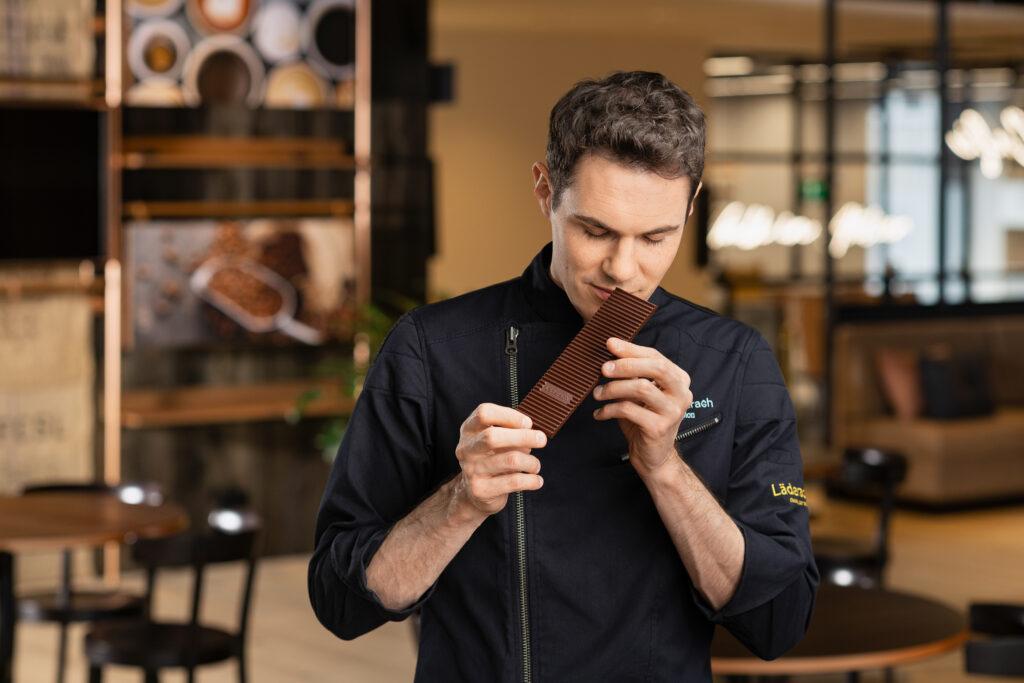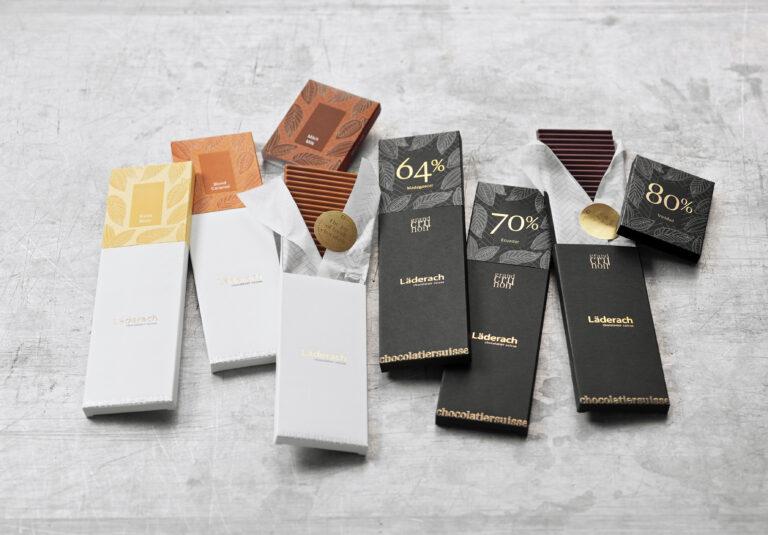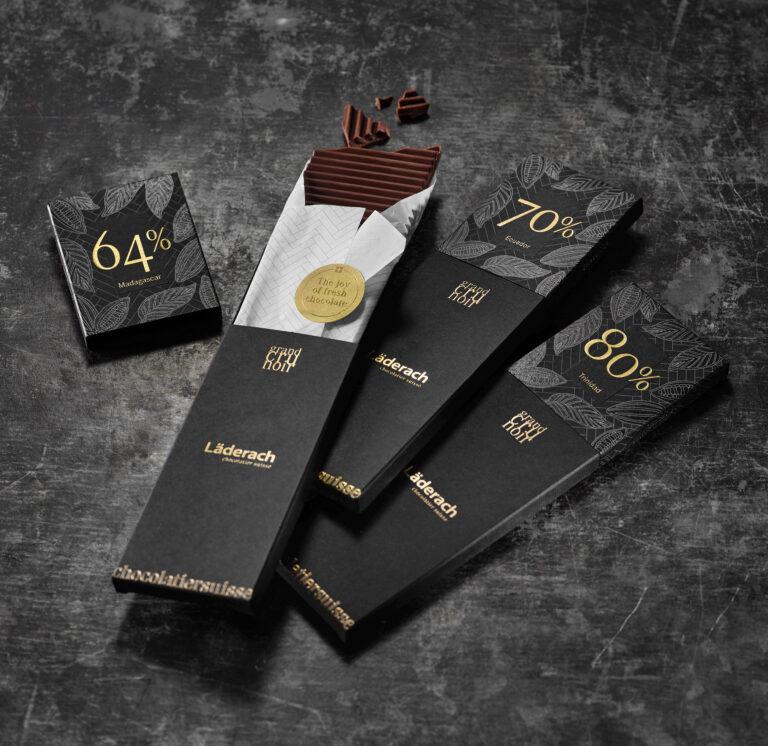Passionate about the art of chocolate-making since he was a child, Elias Läderach knows a thing or two when it comes to understanding good quality chocolate.
Known for his creativity when it comes to confectionary, Elias has notched up an impressive portfolio as a Swiss Chocolate Master and champion of the World Chocolate Masters. Using a combination of talent and hard work, Elias continues to innovate and educate the art of chocolate-making. Offering this beginners guide to how to taste and experience chocolate in all its facets, the first rule of thumb is to pick a bar of fine chocolate. For this chocolate tasting guide for beginners, Elias uses his personal favourite, Läderach Grand Cru Madagascar 64% Single Origin.
Like wine, chocolate can be diverse in its colour, flavour, smell, and aftertaste and should therefore be savoured like a fine vintage. Tastings are about engaging all five senses in order to appreciate the product, so with that in mind we cleanse our palettes start with the all important sense of sight.
LOOK
“Take a closer look at your chocolate”
It is said we eat with our eyes so, naturally, appearance is all part of the enjoyment process. That said, it doesn’t always denote quality so there are a few things we need to take into consideration. What colour is it? What does the texture look like? Can you see bubbles or swirls? Is it shiny?
“You can discern some of the quality of chocolate from its finish – it should have a silky matte gloss. This unique sheen is created when the chocolate is properly tempered. If you do not want to enjoy your chocolate right away – which we find hard to imagine – it should be kept dry and stored a temperature of around 65°F/18°C away from direct heat or sun in order to retain its quality and freshness.”
The colour of chocolate can also vary from golden to copper brown, deep red to ivory, which is all dependent on the percentage and origin of the cacao. Milk or cream also affect the appearance, so bear this in mind when sampling your bar.
TOUCH
“Feel the smooth texture”
Next we move on to touch. As you run your fingers across the surface, consider the texture – is the chocolate hard or soft? smooth or grainy? creamy or dry? Pay close attention to how it feels when you rub it gently between your thumb and forefinger – does it melt right away?
“High-quality chocolate gets its texture and finish from the combination of finely ground cocoa, the perfect amounts of cocoa butter and sugar, and the right conching time. All of these factors together result in a smooth, velvety texture – like the texture of our Läderach tablets.”
As the chocolate slowly softens, gently inhale these initial aromas. These may differ throughout the tasting so worth making a note of. Sometimes chocolate can also be big on aroma but lack flavour and vice versa.
SOUND
“Did you know that chocolate makes a sound?”
Before we move on to the more in-depth smelling step of the tasting, hold a piece of chocolate up to your ear and break it.
“You should hear a short, clear snap. This means that the chocolate was perfectly tempered. When chocolate is heated and cooled at just the right temperatures, this gives the cocoa butter the proper hardness. Milk chocolate has a quieter snap than dark chocolate because the milk fat makes it softer. Grab a piece and try it for yourself!”
SMELL
“The unmistakable scent of chocolate”
Just like wine, high-quality chocolate has an incredibly complex bouquet. Since Läderach chocolate is so fresh, it has a particularly rich, delicious aroma. White chocolate is mainly characterised by notes of vanilla and milk, whereas milk chocolate will have an aroma of cocoa beans.
“Our Grand Cru chocolate tablets will smell more distinctly of roasted cocoa notes, while our Blond tablets feature the warm, enticing scent of caramel.”
The more chocolate you taste and explore, the more refined your nose and palette will become in terms of comparing richness, sweetness, intensity, and earthiness of the first smelling notes
TASTE
“Savour the complex flavours and smooth, fine melt”
Now, we have arrived at what is arguably the most important aspect: taste. When it comes to the taste and texture of chocolate, the quality of the raw materials is key. It is the combination of these ingredients that lend chocolate its unique and distinctive flavour.
“Put a piece of chocolate in your mouth and let it melt on your tongue. It should not melt too quickly or too slowly, and it should not be gritty or have an oily aftertaste. Läderach chocolate’s fine, uniform texture allows all of the complex flavours and aromas to unfold so you can enjoy a uniquely delicious experience.”
It can be hard to concentrate on the depths of flavour when you are trying to enjoy the all important taste test, but ask yourself these questions does the flavour come on quickly or slowly? Does the flavour change? How long does the flavour last in your mouth?
Again, just like when we think of wine, professional chocolate tasters often look at the finish to rate the quality of chocolate. High-quality chocolate should leave a pleasant taste in your mouth, often lingering on the palette for some minutes after finishing the bite. This is also a good time to reflect on the earlier tastes, smells and flavour notes and compare.
The tasting notes for Läderach’s Grand Cru Madagascar 64% Single Origin are fruity, cocoa, pleasantly bitter with a hint of vanilla. This Grand Cru chocolate is made exclusively with cocoa from Madagascar and has a cocoa content of 64%.
“It has a deep brown colour and a silky sheen. Its fruity aroma of fresh limes and light, savory sweetness lend this chocolate an alluring character. On the tongue, the chocolate releases a bouquet of flavours including citrus fruits, red berries, honey, and delicately roasted island cocoa. Rounded out by its extremely fine texture, the Grand Cru Madagascar 64% chocolate is truly a delight.”
Läderach (Schweiz) AG
Bleiche 14
CH-8755 Ennenda
+41 55 645 44 44 | info@laderach.com | @laderach.chocolatier.suisse

